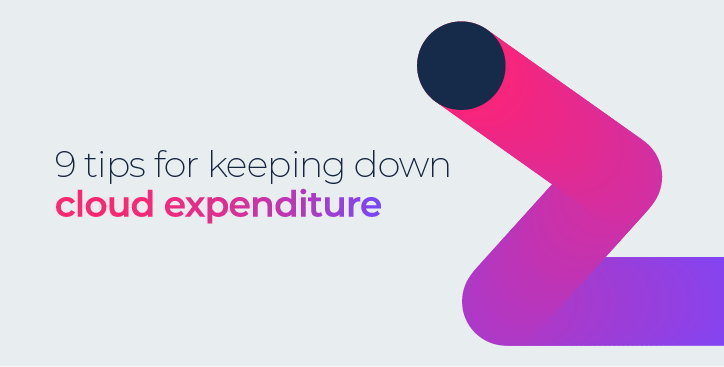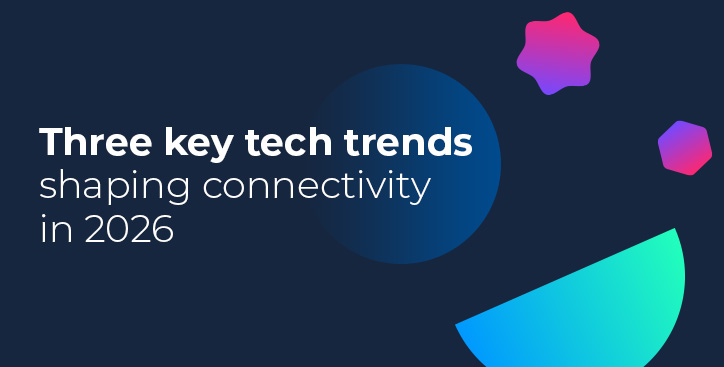9 tips for keeping down cloud expenditure
By Alex Hawkes|17 October, 2022

At first, the benefits of public cloud adoption are clearly recognisable: newfound agility through an all-you-can-eat and on demand buffet of services, platforms, and infrastructure.
But without appropriate monitoring, guardrails and process changes, this can change fast.
While the perception is that cloud offers unlimited scalability and lower costs by only charging for the resources you use, the truth is that customers pay for the resources they order, whether they use them or not.
This is a significant issue, and according to Gartner, over 60% of IT infrastructure leaders have experienced public cloud cost overruns that negatively impact their budgets.
And with IT costs on the rise, there’s never been a more important time to keep an eye on your cloud expenditure. Here are some of our top tips:
Locate unused resources
One of the biggest areas for overspend is resources that were spun up temporarily or are no longer in use. Some of the biggest culprits are when a developer spins up an instance or server to perform a single function, but forgets to spin it down when the job is done. Or when an administrator forgets to terminate the storage attached to an instance that has been closed.
Without a process for identifying and removing unused resources, they will still appear on the bill, eating into your budget.
Consolidate idle resources
It used to be that when IT operations were all run out of private data centres, idle capacity was built in by design. It was expensive and time consuming to add new resources, so overhead was built in to account for sudden traffic spikes or busy seasons.
With the auto-scaling and on-demand capabilities of the cloud however, new resources can be added in real time, meaning you can eliminate any idle instances with no performance penalty. If you have a virtual server that only has a CPU utilisation of 5% for example, you will still be billed for 100% of that CPU. So hunt down all these underused resources and consolidate jobs onto fewer instances and maximise their load.
Right sizing
A natural extension of the above, a significant cost driver with cloud adoption is over-provisioning. You need to adopt a mind-set of only ordering what you need, so you only pay for what you use. The cloud requires IT teams to think differently about capacity planning and resource management, making good use of network resource modelling and discovery tools to build in optimisation and efficiencies from the start.
Establish a governance model
One of the great benefits of the cloud is one of its greatest challenges. Almost anyone in any function can spin up cloud instances that can quickly become mission critical. Ownership has moved out of the IT department and into the hands of the masses, so you need to establish a governance model up front that will dictate approvals for adopting new cloud resources as well as monitoring usage to make sure it doesn’t spiral out of control.
Spot instances and reserved instances
If you run a lot of batch jobs or jobs that can be easily interrupted and restarted, you can look into spot instances. This is spare compute capacity that is made available by the cloud provider and auctioned off in real time so they can maximise usage of their own assets. These typically have a much lower cost than on demand instances, but be warned that they go as easily as they come and will be terminated if that capacity is needed elsewhere.
For businesses that have a much more predictable utilisation pattern or are able to commit longer term, you can pre-pay for reserved instances, which can give much larger discounts by spending up front.
Adopting a hybrid cloud strategy
Each cloud has its own strengths and weaknesses and enterprises can take a best of breed approach by choosing the best cloud for the job, while simultaneously reducing the lock-in to a single vendor and potentially lowering the overall cost.
An IBM report found 79% of IT executives place high importance on cloud cost management tools that run across multiple clouds, maximising value by avoiding unnecessary costs and giving a holistic picture of the organisation’s cloud footprint.
Adopt a new financial mindset
Companies are currently adjusting their financial mindsets, and teams, to better work in an on-demand world. Cloud no longer requires capital planning and budgeting annually or even quarterly, because by the time the finance team has booked a meeting room the economics have already changed. There’s even a new movement dedicated to it called Finops.
Automation
Armed with a rich menu of APIs and the ability to create automated workflows, many CIOs and IT managers see cloud automation as one of the single most important methods for reducing cloud costs.
A simple view might be that most non-production systems do not need to run overnight or during weekends. With some simple automated scripts, you could shut these down and immediately see a significant cost reduction. Automation can also be used to supplement right sizing and dealing with over-provisioning of resources, including networks.
Dedicated connectivity
Although most cloud providers let you upload as much data as you like for free, accessing and extracting that data can come with significant costs. Companies can keep egress fees low by investing in private, dedicated connections to their multiple clouds, allowing you to pull large amounts of data for a reduced cost but also improving performance and security.
Especially useful for multi-cloud environments, Network-as-a-Service interconnection fabrics like Console Connect now have Points of Presence in so many cloud data centres it’s possible to spin up Layer 2 and Layer 3 connections into those clouds almost instantaneously to meet demand.


.jpg)





.jpg)